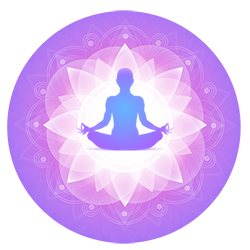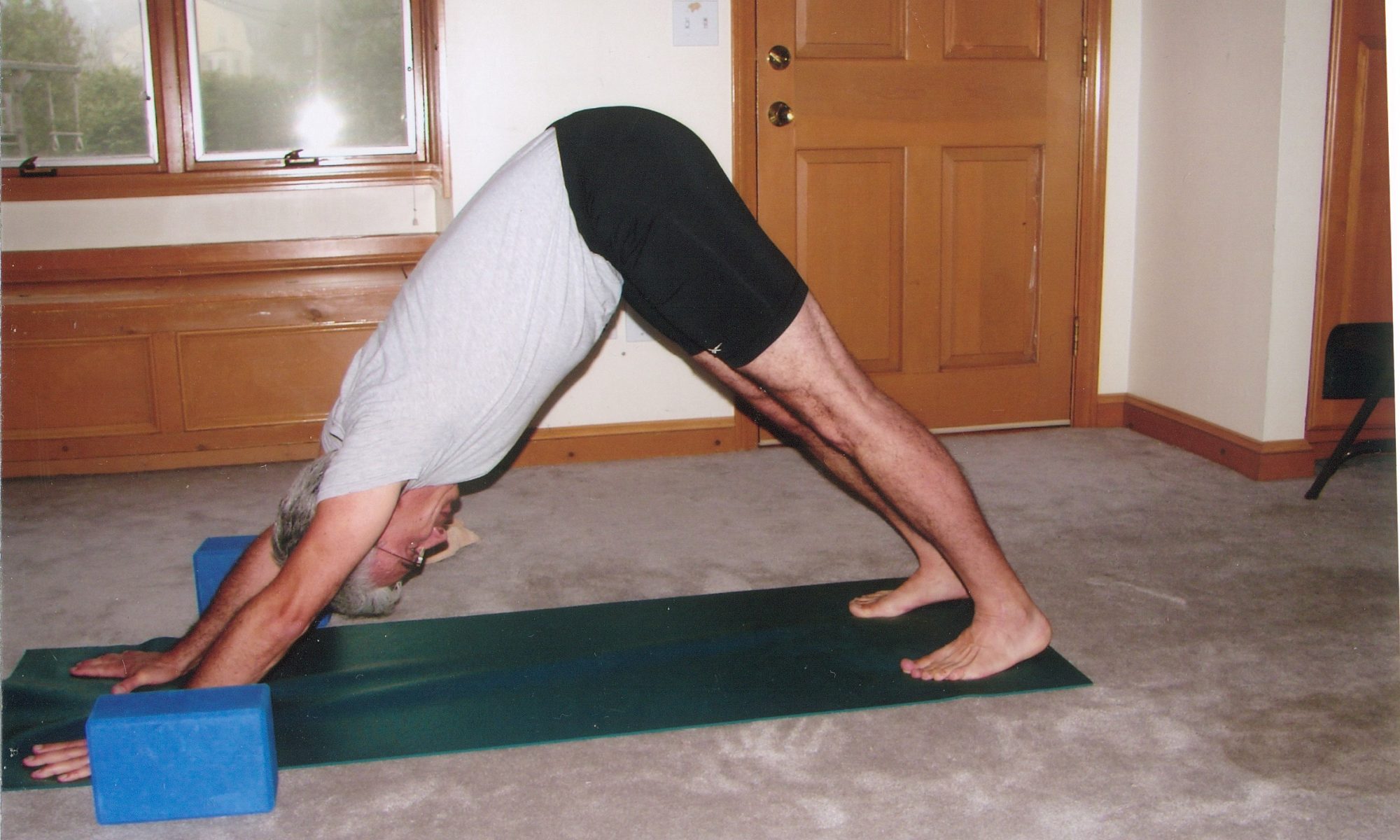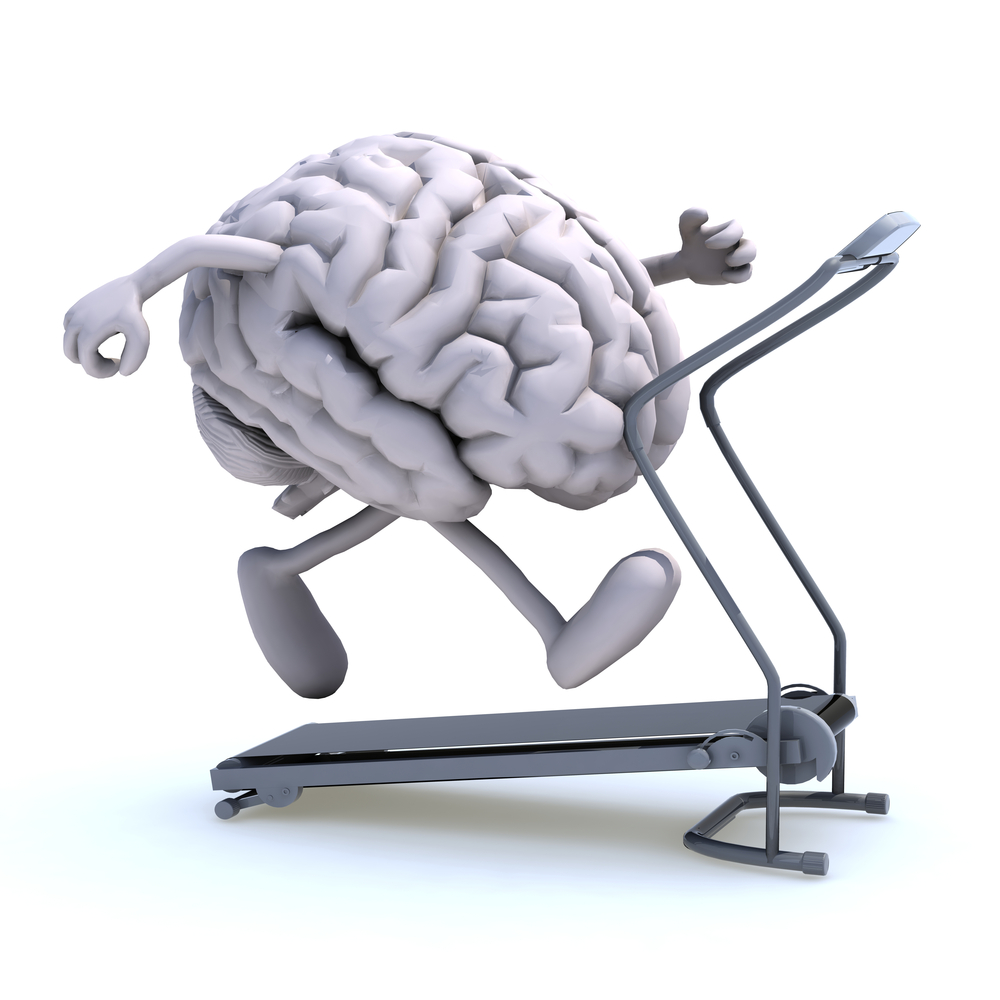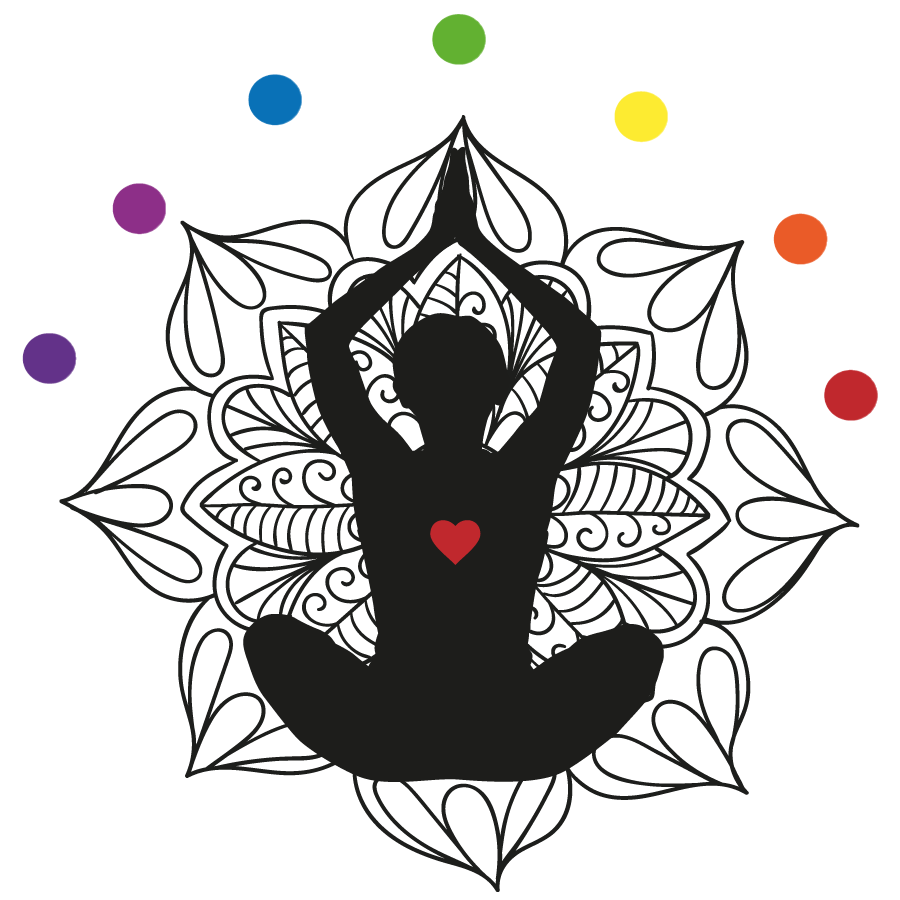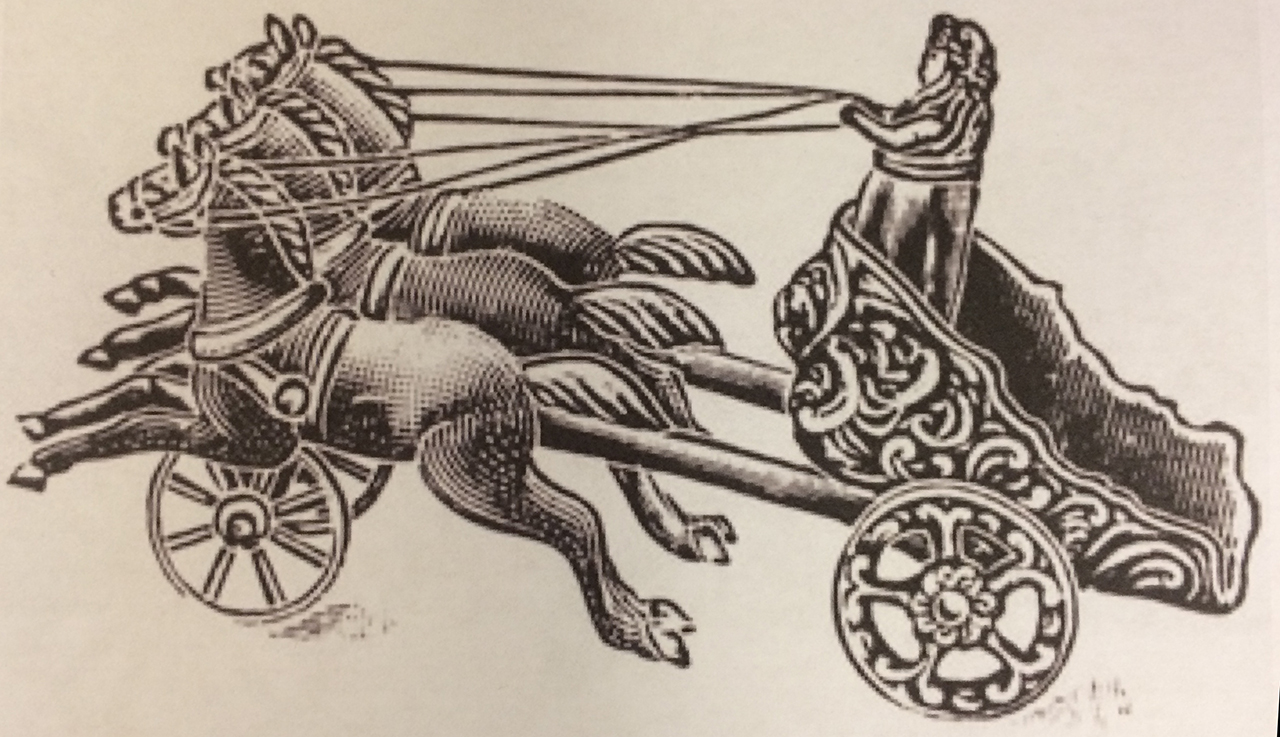Morning class itinerary, 6-7-17
7:30am Meditation
Lesson (10 min) – sutras III.9 to 13; continued discussing the three phases or levels of meditation: focus, prolonged focus, and absorption. The latter is effectively a self-induced trance: like dreaming, though you’re aware that you’re controlling the content of your thoughts, so much so, that you’re simultaneously unaware of anything else: where you are, what day or time it is, even what you’re doing!– until something brings you out of it like a doorbell or phone.
We read from Swmaij.com about the three states of transition between the three levels of meditation. He uses the analogy of attending a concert:
As you wait for the concert to start, your mind is naturally scattered: chasing sensations, drawn to sounds of conversations, smells of food and perfume, sights of people.
- As the concert begins, you experience the first transition: from a scattered state of mind to a focused one (dharana) as you turn your attention to the stage. Satchidananda says in dharana, you experience the end of desire.
- As you begin to enjoy the performance, you experience the second transition: your focused state of mind becomes prolonged (dhyana) as the performance holds your attention. Satchidananda says in dhyana, you experience the end of sorrow.
- After prolonged focus (dhyana), you experience the third transition: you become absorbed in the concert to the exclusion of everything else (absorption = samadhi). Satchidananda says in samadhi, you experience the end of fear.
Seated conscious abdominal breathing (15 min)
Seated concentration (5 min)
Seated stretches (5 min)
9:00am Practice
Standing stretches (5 min)
Tadasana (5 min) https://www.yogajournal.com/poses/mountain-pose
Gigong monk’s boat (15 min) mindful standing synchronization of movement, breath, and thought https://www.youtube.com/watch?v=icS_WezFlJE
Sun salutation (15 min) mindful flowing sequence of seven different classic yoga poses, again synchronizing movement, breath, and thought https://www.yogajournal.com/videos/salute-the-sun-modified
Utthita Trikonasana (10 min) 2x each side; hold each pose 90 seconds https://www.yogajournal.com/videos/extended-triangle-pose
Seated conscious abdominal breathing (5 min)
Seated concentration (5 min)
Your Brain
A friend recently made the case for regular physical exercise by highlighting its many benefits to our brain: increased blood flow, etc.
While important, physical exercise is a small part of the practice of Raja Yoga (a holistic self-care practice focused on mind control) which is literally based on brain functionality; specifically, recognizing:
- the distinction between our NON-PHYSICAL conscious and subconscious mind;
- that our conscious mind functions the same way our heart and lungs do (single, consecutive, and hopefully constant beats, breaths, and thoughts);
- that our conscious mind has a “neutral” as well as volume, directional, and zooming functionality;
- that all conscious thoughts can be categorized into one of five types, only three of which are original;
- that the five types of conscious thought all fall into one of two broad categories: helpful or not! and
- that there are five things that affect our conscious thoughts, categorized by their strength of influence.
Yes, Raja Yoga is a mental science and practice in which you literally learn to control your mind. Yes, it’s difficult, but like everything else, you get better at it the longer you do it.
Let your conscience be your guide. Allan
05-05-17 morning class
Lesson (10 min) – sutra III.10
In this section of the poem, Patanjali describes the experience of meditating; this sutra expands upon the one before it that introduced the notion of thought suppression. The essence of this sutra is that practice makes perfect!
Paraphrasing from Edwyn Bryant’s “The Yoga Sutras of Patanjali”:
[FYI – there are six traditional interpreters of Patanjali’s Yoga Sutras, referred to commentators: Vyasa, Vacaspati Misra, Sankara, Bhoja Raja, Vijnanabhiksu, and Hariharananda]
“Vyasa notes that the nature of the mind is to be scattered and roaming about anywhere and everywhere and thinking all manner of random things. Normally, the mind is restless and thinking about sensory objects, the past and future, worrying about this and that, etc. However, the mind also has the inherent potential of being one-pointed, or fixed on one object. When the latter propensity is developed to its highest potential, you become profoundly self-aware or enlightened.
Vacaspati Misra reminds us that nothing is ever destroyed – when one of these propensities of the mind arises, the other retires. Vijnanabhiksu, adds that changing the nature of the mind is a gradual process; it does not occur instantly, as anyone who’s ever tried to meditate knows!”
Passive stretch (30 min)
The lesson was followed by 30 minutes of passive stretching: a series of supported poses (using bolsters, chairs) each held for 1-3 minutes – allowing gravity and body weight to do most of the work – stretching, opening, expanding – facilitating energy and blood flow.
Seated mindful abdominal breathing (15 min)
Seated concentration; today we used a candle (5 min)
From this heart to yours. 😉
LIFE
Most traditional science-based philosophies agree that at some elemental level, everything is a constantly roiling, evolving mix of two oppositionally charged states of matter: Yin & Yang.
Raja Yoga agrees completely, but allows for the reality that everything is actually a blend of the two opposites: some state of gray, and thus refers to three states of energetic matter: Rajas, Tamas and Sattva, the latter being a perfect balance between the other two. The aim of the practice of Raja Yoga is to foster sattvic thoughts, energy and actions!
Laundry day provides a visual reminder of Patanjali’s view of the scientific underpinnings of our universe. Your body, clothes, food, etc. are all constituted of nature’s Yin & Yang energetic molecules in the same way that your favorite streamed movies, TV shows and video games are two dimensional manifestations of a bunch of manmade 0’s and 1’s!
See the miracle of life in everything and you WILL smile more than you frown!
PATANJALI’S FRIENDS – PART II
Why make such a big deal about consciousness? Because it IS a BFD!!
First of all, life would be pointless without consciousness since we’d all be biological robots unaware of our own thoughts and actions! Right; so be thankful you have it!
Second, consider its nature: what it is and what it isn’t.
It’s the awareness OF your mind’s functioning.
It’s not a mental function per se. Consciousness or awareness OF what you’re thinking is immutable and universal. While your thoughts change constantly like your heartbeats and breaths, your awareness OF them never does. Your awareness OF your thoughts is exactly the same today as it was the day you were born; and yours, your neighbors’, and mine are all identical, though obviously our thoughts are unique to each of us.
According to Sankhya, the science upon which the practice of Raja Yoga is based, consciousness is the one thing that isn’t subject to the vagaries of time and space (karma). Consider the nature of something that isn’t affected by time and space – and that it’s an aspect of YOU!
Your consciousness OF your thoughts is clearly subtler than your thoughts themselves.
According to the Bhagavad Gita (“God’s Song”) which predates Patanjali’s Yoga Sutras, consciousness is “autonomous, a spotless lotus, eternal, infinite, pure, unblemished, immovable, existent, indivisible, beyond decay and death, everlasting, immutable, and imperishable.”
The ancient texts say consciousness is the aspect of you that can’t be burned or drowned; today they’d say it was bulletproof.
By controlling and quieting your body and mind, you draw inward, closer to your essence, your true self: your consciousness.
But resolute faith in the existence of God?
When you realize that an aspect of you is literally bulletproof, THAT recognition begs ALL kinds of questions, starting with “What’s the source of THAT part of me – which btw isn’t described in any anatomy book ever published?!” Raja Yoga is a universal practice literally intended to end human suffering, yet it’s an entirely individual practice since only you have access to your mind!
Over time, the practice engenders absolute faith in the existence of something we literally aren’t capable of experiencing directly: God.
FRIENDS OF PATANJALI
For awhile my daily prayers have included some version of the following:
Thank you for:
- Consciousness – without which I wouldn’t realize I was even here!
- Patanjali – who codified the practice of Raja Yoga: a path to experiencing consciousness
- Vyasa – the first of the six traditional commentators or “un-packers” of Patanjali’s Yoga Sutras
- Practitioners – all who preserved the practice over the millennia
- Satchidananda – a notable modern day devotee and teacher of Patanjali’s Yoga Sutras (the author of the textbook we use)
- All yoga teachers past and present
But I was reminded this morning that the list above is missing a BIG piece: the anonymous yogis who a) DISCOVERED that consciousness is NOT a mental function and b) how to prove it!
Patanjali was a successful practitioner and brilliant academic who codified the practice and science in a poem or outline – thus preserving the experiences and knowledge of countless yogis who preceded him.
The Bhagavad Gita, the other universally recognized authoritative text on Raja Yoga, was composed before Patanjali produced the Yoga Sutras. The Gita is a conversation between a sage and his king. The following is largely excerpted from Edwin Bryant’s “the Yoga Sutras of Patanjali”:
The sage is describing what’s become known as Raja Yoga to the king:
I have spoken to you about the knowledge of Sankhya [Allan: the understanding that energetic matter and consciousness are distinct]; now hear from me the knowledge of yoga as I have heard and seen it.
There is no knowledge equal to Sankhya; there is no power like that of yoga. Both of these are the same path; both are said to lead to immortality. Only people lacking wisdom say that they are different, but we see them as one without any doubt. That which the yogis perceive, the followers of Sankhya experience. One who sees that Sankhya and yoga are one, is a seer of Truth.
[Allan: here the text attributes mystical powers to yogis.]
In the Vedic scriptures, the wise speak of yoga as having eight equalities, and bestowing eight subtle powers.
They say that the topmost practice of yoga is of two kinds, according to what is revealed in the scriptures: yoga with “qualities” and yoga without “qualities”. [Allan: here it’s likely the text refers to meditating with and without “seed”, the latter referring to the highest state of consciousness or meditation.]
Practices involve concentrating the mind, and controlling the breath. [Allan: the text advises caution with respect to certain breathing practices.]
Living in solitude, tranquil, and controlled, one could without doubt experience one’s consciousness by practicing yoga with one’s mind, delighting in the union and living in solitude.
One should cast off the senses: sound, form, touch, taste, and smell. One should restrain sensual desire by concentrating the mind; [specifically, the conscious mind should be used to a) restrain senses, memories and ego, and b) distinguish between matter and consciousness].
After taking this progression, one should meditate on consciousness, which is autonomous, a spotless lotus, eternal, infinite, pure, unblemished, immovable, existent, indivisible, beyond decay and death, everlasting, immutable, and imperishable.
Consider the characteristics of the yogi. The character of the yogi is tranquil, like that of a contented person sleeping blissfully.
The wise speak of the yogi as like the upward motionless flame of a lamp full of oil burning in a windless place.
The character of a yogi is like a rock, which is incapable of being moved even when pummeled by torrents of rain pouring down from clouds.
The demeanor of a yogi is not moved by the noise of assorted conches and drums being played together, nor the outbursts of song. [Allan: think Braveheart, Gibson’s movie]
Just as a person of composed nature might ascend a staircase while holding a container full of oil, and yet, despite being alarmed upon being attacked by assailants armed with swords, does not spill a drop out of fear of them, so, in the same way, the mind of one who is absorbed in the supreme, is fully concentrated.
These are the characteristics of the experienced yogi, which are displayed due to resolve and to controlling the activities of the senses.
Absorbed in consciousness, the yogi beholds the supreme and imperishable, resembling a lamp blazing forth in dense darkness.
It is in this way that, after the passage of much time in practice, the yogi enters the state of liberation from the body/mind. This is revealed in the eternal scriptures.
This is indeed the yoga of the yogis. What else is the character of yoga? The wise consider that yogis have accomplished the goal of life.
God bless, Allan
Patanjali’s Yoga Sutras – chapter 2 loosely translated
Patanjali takes a two-pronged approach to living peacefully, giving equal weight to attitude (kriya) and behavior (astanga).
Chapter two (25%) of Patanjali’s Yoga Sutras is 55 lines long and entitled “Prepare” to meditate; section headings below are inserted for reference:
EMOTIONS
What is Kriya Yoga and what’s its purpose?
1. Kriya Yoga is a practice in serenity, courage, and wisdom
2. Practicing reduces the cause of self-inflicted suffering (“emotions”)
What are the causes of self-inflicted suffering?
3. Ignorance, ego, attachment, aversion and fear
4. Ignorance causes the other four, which are dormant, feeble, intermittent or sustained natural impulses
5. Ignorance is mistaking the impermanent [body/mind] for the permanent [Consciousness]
6. Ego is mistaking mind for awareness
7. Attachment stems from pleasant experiences
8. Aversion stems from unpleasant experiences
9. Fear, specifically of loss and death is natural
How are emotions subdued?
10. Effects of emotions may be subdued via concentration,
11. And may be eliminated altogether via meditation
KARMA
Why is it important to subdue emotions?
12. Emotions influence thoughts which precede actions; every action precipitates an endless cycle of cause & effect: karma
13. Karma set in motion before we were born is largely responsible for the quality, duration and circumstances of our lives
What is Karma and why is it important?
14. Karma refers to the perpetual cycle of cause and effect initiated by every action
15. Karma is the natural consequence of two energetically charged, oppositional states of matter [Yin and Yang]; this energetic, oppositional nature is the cause of our constant mental conflict
16. Only when the energetic, oppositional states of matter constituting our body and mind are in balance can peace be found
CONSCIOUSNESS vs. COGNITION
Consciousness vs. cognition is the key; avoid pain by remaining aware of the difference!
17. Avoiding future pain is a matter of remaining aware of the distinction between matter and Consciousness
18. The latter witnesses life through the former
19. The oppositional states of matter are infinite
20. Consciousness is just that; it’s perceived as, but isn’t, a mental function
21. Matter is the instrument of Consciousness…
22. ….although its not our nature to see it that way
23. The union of Consciousness with our body/mind makes us miraculous
24. Confusing Consciousness with cognition is the source of ignorance
IGNORANCE
How to eliminate ignorance
25. Eliminate ignorance by remaining aware of the distinction between thought and awareness of thought
26. Constant, discriminative awareness of our dual nature is how to do so
27. This ultimate self-recognition is liberating in every sense
What is Astanga Yoga?
28. The eight limbed practice leads to discriminative awareness
29. Abstentions, observations, outer bodily control, inner bodily control, conscious mind control, and three successively subtle stages of subconscious meditation
Abstentions & Observances
30. Abstentions: harming, lying, stealing, lust and greed
31. There are no exceptions to this most important limb
32. Observances: cleanliness, serenity, courage, wisdom and faith
33. Foster positive thoughts
34. Reflect on the source and strength of emotions behind your thoughts
Abstentions:
35. Hostilities cease in the presence of one who abstains from harm
36. To abstain from lying, focus on your thoughts since words are preceded by thoughts
37. One who abstains from stealing becomes rich in more meaningful ways
38. Restraining lust produces vigor
39. One who abstains from greed attains ultimate knowledge
Observances:
40. Take care of your self; recognize your frailties
41. Cleanliness and self-care foster self-awareness and self control, engendering peace of mind
42. Serenity is the source of bliss
43. Courage brings out the best in us
44. Wisdom deepens one’s faith
45. Faith, surrendering to something greater than yourself, makes bliss possible
Outer bodily control [posture]
46. Posture should be steady and comfortable
47. Overcome restlessness in your posture by concentrating on the infinite
48. That’s how to attain balance; tranquility conquers the outer body
Inner bodily control [breath/energy control]
49. Now you’re ready to control your inhalations and exhalations
50. Learn to control the duration, separation, and rate of your breath
51. There’s a fourth, non-physical aspect to breathing [i.e., in addition to inhalation, retention, and exhalation] which occurs during concentration
52. As a consequence of this fourth state of breath, the veil of ignorance is lifted
Conscious mind control [concentration]
53. Now you’re ready to concentrate [i.e., to control your conscious mind]
54. Concentration is focusing to the point that you’re not aware of your sensory (sub-conscious) perception
55. Practice concentrating until you have complete mastery of your sensory mind
I’m a yogi
I’m a spiritual guide like a priest or rabbi, though my faith comes from Patanjali, father of Raja Yoga. I teach Patanjali’s Yoga Sutras, a 3,000 year old, 200 line poem outlining the science of transcending the mind to experience consciousness (i.e., to become “enlightened”).
Patanjali’s poem has four parts. About halfway through the first part (sutra 1.20), he lists a sequence of energetic experiences you’re likely to have along the journey. Here’s what Edwyn F. Bryant*, says about this line of Patanjali’s poem [paraphrasing]:
FAITH – Vyasa [universally recognized as the original authoritative commentator on Patanjali’s work] states that faith sustains like a benevolent mother; it supports the yogi until the very end.
VIGOR – comes from deep faith, which the commentators take to be the pursuit of the eight limbs of yoga described in the second part of the poem; in other words, faith inspires an energetic pursuit of enlightenment.
MEMORY – vigor produces memory, which is understood by Vyasa to mean an undisturbed mind.
MEDITATION – a focused state of mind facilitates un-deviated concentration on an object.
DISCERNMENT – as a result of the complete absence of distraction in the final stage of meditation, discernment, the ability to see things as they really are, manifests. The ultimate act of discrimination is to realize the distinction between mind and consciousness: the latter [the Holy Grail of Patanjali’s poem] witnesses the former.
God bless, Allan
*source: Edwin F. Bryant’s “The Yoga Sutras of Patanjali: a new edition, translation, and commentary with insights from the traditional commentators”
Energy
Intuitively, you know that your body is energetic since it requires energy to move, but it also requires energy (albeit subtler) to think; specifically, to change your mind and go in a different direction!
How does it work? The three-horse chariot is a classic Raja Yoga metaphor of your energetic self:
3 HORSES – represent the three functions of your subconscious mind: 1) sensory receipt & processing (i.e., bodily functioning), 2) memory storage, and 3) your sense of “I-am”
REINS – represent the subtle subconscious mental energy that powers your three subconscious mental functions; this subconscious mental energy or mind can be controlled by your conscious mind
CHARIOTEER – represents the conscious mental energy that you’re aware of: your thoughts! This is the part of your mind that you make decisions with and that you hear. Your conscious mind should remain vigilant (THAT is the real practice of Raja Yoga!) and direct your subconscious mind regarding what to pursue and avoid – rather than letting it run amuck!
CHARIOT – represents your body; the energetically dense part that sustains, propels and protects you; its up to you to keep your chariot in good working order to more effectively fulfill your responsibilities. Obviously, the physical demands on a soldier are different than a grade school teacher – but a broken chariot is going to distract any charioteer!
In short, we are literally pulled about by the natural functioning of our subconscious mind: an energetic mix of sensations, memories and need, BUT thankfully we can use our conscious mind to reign in and direct our subconscious mind’s natural tendencies.
Raja Yoga is a dual practice in self-awareness and self-control for which I thank God and the divinely inspired Patanjali, every day.
Allan

